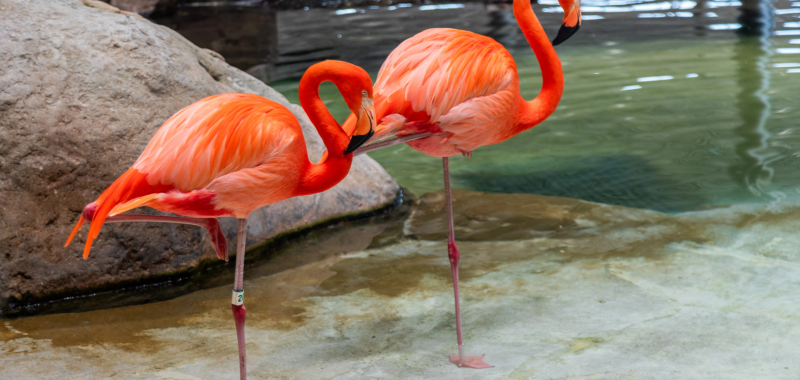
Stand up and try to balance on one leg. Can you do it?
How long we can stand up like a flamingo is an important indicator of general health, especially as we age. It indicates changes in the strength of our legs and balance. New research from the Mayo Clinic found that a person’s ability to balance on one leg actually deteriorates with age faster than walking gait or grip and knee strength and is a better indicator of aging. The findings are detailed in a study published October 23 in the journal PLOS ONE.
What’s the big deal with balance?
Good balance, muscle strength, and an efficient gait are some of the major factors to our independence and well-being as we age. Exactly how they change and at what rate can help healthcare providers develop better programs for healthy aging.
“Balance is an important measure because, in addition to muscle strength, it requires input from vision, the vestibular system and the somatosensory systems,” Doctor Kenton Kaufman, a study co-author and director of the Motion Analysis Laboratory at Mayo Clinic, said in a statement. “Changes in balance are noteworthy. If you have poor balance, you’re at risk of falling, whether or not you’re moving. Falls are a severe health risk with serious consequences.”
Putting balance, gait, and strength to the test
In this study, 40 healthy, independent people between the ages of 52 and 83 underwent walking, balance, grip strength, and knee strength tests. During the balance tests, participants were asked to stand on force plates in four different ways–on both feet with their eyes open, on both feet with their eyes closed, on their non-dominant leg with their eyes open, and on their dominant leg with eyes open. These tests lasted 30 seconds each and participants were able to hold their other leg however they wanted during the one-legged tests.
According to the results, standing on one leg and particularly the non-dominant leg showed the highest rate of decline with age. This loss of balance can lead to unintentional falls, one of the leading causes of injury in older adults. According to the National Institute of Aging, over 1 in 4 people ages 65 and older fall annually.
[Related: How does your body stay balanced inside? Thank homeostasis.]
“If you can’t stand on your leg for five seconds, you’re at risk of falls,” Dr. Kaufman told The Washington Post. “If a person can stand on their leg for 30 seconds, they’re doing really well, especially if they’re older.”
Additionally, the researchers used a custom-made device to measure participants’ grip. To measure knee strength, participants were sitting down and instructed to extend their knee as forcefully as they could. The grip and knee strength tests used the participants’ dominant sides.
While grip and knee strength did decline significantly by decade, it did not drop as much as balance. Grip strength decreased at a quicker rate than knee strength, so the team believes this is a better strength metric for predicting aging.
[Related: The Monty Python ‘silly walk’ could replace your gym workout.]
In the gait test, participants walked back and forth on a 26 feet, level walkway at their own pace and speed. They found that the gait parameters didn’t change with age. According to Kauffnan, this was not a particularly surprising result since the participants were walking at their normal pace and not at their maximum pace.
There were also no age-related declines in the strength tests that were specific to sex. This indicates that their grip and knee strength declined at a similar rate, according to the study. They also did not identify any sex differences in the gait and balance tests, so male and female subjects were equally affected by age.
Ways to train your balance
While aging itself is unavoidable, there are steps you can take to train your balance. Standing on one leg can train the body to coordinate muscle and vestibular responses to keep our bodies in correct balance, according to Kaufman.
“If you don’t use it, you lose it. If you use it, you maintain it,” Dr. Kaufman said. “It’s easy to do. It doesn’t require special equipment, and you can do it every day.”
The Mayo Clinic also recommends other balance exercises, including weight shifts, bicep curls, and tai chi.

